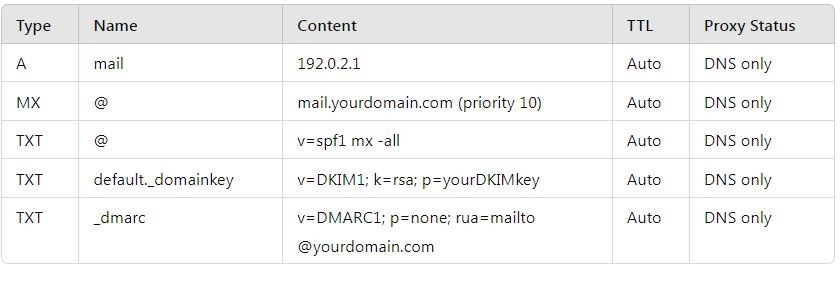In the ever-evolving world of digital marketing, maintaining and recovering traffic to your Amazon affiliate website is crucial for sustained success. If you’ve noticed a drop in Google search engine driven visitors, it’s essential to take strategic steps to regain that valuable traffic. This comprehensive guide will provide you with detailed steps and insights to recover your Google search engine visitors and boost your affiliate earnings.
Understanding the Drop in Traffic
Before diving into recovery strategies, it’s crucial to understand why your traffic dropped. Several factors could be at play, and identifying the root cause is the first step towards a successful recovery.
Common Reasons for Traffic Drop
- Google Algorithm Updates: Changes in Google’s algorithm can significantly impact your website’s ranking.
- Technical SEO Issues: Problems like broken links, slow page load times, or poor mobile optimization.
- Content Quality Decline: Outdated or low-quality content can result in lower rankings.
- Backlink Issues: Loss of valuable backlinks or an increase in toxic backlinks.
- Competitor Improvements: Competitors enhancing their SEO strategies.
Analyzing the Traffic Drop
Using Google Analytics
Google Analytics is a powerful tool to analyze your website’s traffic patterns. Look for trends and specific points in time when the drop occurred.
- Audience Overview: Check for changes in user demographics, behavior, and devices.
- Acquisition Report: Identify which sources of traffic have declined.
- Behavior Flow: Understand how visitors navigate your site and where they drop off.
Utilizing Google Search Console
Google Search Console provides insights into how your site performs in Google search results.
- Search Performance: Analyze changes in clicks, impressions, and average position.
- Coverage Report: Identify indexing issues and errors.
- Manual Actions: Check for any penalties imposed by Google.
Optimizing On-Page SEO
On-page SEO is crucial for improving your site’s visibility in search engine results. Here are some key strategies:
Keyword Optimization
- Keyword Research: Use tools like Ahrefs, SEMrush, or Google Keyword Planner to identify high-potential keywords.
- Content Optimization: Ensure your content naturally incorporates these keywords in titles, headers, meta descriptions, and throughout the body text.
- Avoid Keyword Stuffing: Overuse of keywords can lead to penalties. Focus on natural integration.
Content Quality
- Update Old Content: Refresh outdated articles with new information, statistics, and insights.
- Create Comprehensive Guides: Develop in-depth, valuable content that thoroughly covers topics of interest to your audience.
- Multimedia Integration: Use images, videos, and infographics to enhance user engagement and content quality.
Internal Linking
- Logical Structure: Create a clear and logical internal linking structure to help users navigate your site.
- Descriptive Anchor Text: Use relevant and descriptive anchor text for internal links to improve SEO.
Enhancing User Experience (UX)
User experience is a significant factor in retaining visitors and improving SEO. A positive UX can lead to higher engagement and lower bounce rates.
Mobile Optimization
- Responsive Design: Ensure your website is fully responsive and works well on all devices.
- Mobile-Friendly Test: Use Google’s Mobile-Friendly Test tool to identify and fix mobile usability issues.
Page Speed
- Speed Optimization: Use tools like Google PageSpeed Insights to identify factors slowing down your website.
- Image Optimization: Compress and optimize images to reduce load times.
- Browser Caching: Implement browser caching to speed up repeat visits.
Clear Navigation
- Simplified Menus: Create intuitive and easy-to-navigate menus.
- Breadcrumbs: Use breadcrumb navigation to help users understand their location within your site.
Building High-Quality Backlinks
Backlinks are a critical factor in SEO. High-quality backlinks from reputable sites can boost your site’s authority and ranking.
Guest Posting
- Target Reputable Sites: Write guest posts for high-authority websites in your niche.
- Value-Driven Content: Provide valuable and high-quality content to increase the chances of getting published.
Outreach
- Building Relationships: Develop relationships with industry influencers and bloggers.
- Content Sharing: Encourage them to share and link to your content.
Content Marketing
- Create Shareable Content: Develop content that others in your industry will find valuable and want to link to.
- Infographics and Data-Driven Posts: These types of content are often more shareable and likely to attract backlinks.
Utilizing Social Media
Social media can drive significant traffic to your website and indirectly improve your SEO.
Promotion
- Share Content Regularly: Share your blog posts and affiliate links regularly on social media platforms.
- Engage with Followers: Respond to comments, participate in discussions, and build a community around your content.
Social Signals
- Boost Engagement: Higher engagement on social media can lead to increased traffic and improved search engine rankings.
- Use Hashtags: Relevant hashtags can increase the visibility of your posts.
Monitoring and Adapting
Continuous monitoring and adaptation are crucial to maintaining and improving your site’s performance.
Regular Audits
- SEO Audits: Conduct regular SEO audits using tools like Screaming Frog or SEMrush.
- Content Audits: Periodically review and update your content to keep it relevant and valuable.
Trend Analysis
- Stay Updated: Keep up with the latest SEO trends and algorithm updates.
- Competitor Analysis: Monitor your competitors’ strategies and adapt accordingly.
Content Calendar
- Consistent Updates: Maintain a content calendar to ensure regular updates and new content additions.
- Seasonal Content: Create content around seasonal trends and events to capture timely traffic.
Optimizing for Conversions
Driving traffic is only part of the equation; optimizing for conversions is equally important for an affiliate website.
Clear CTAs (Call to Actions)
- Strategic Placement: Place CTAs in prominent and logical positions throughout your content.
- Compelling Copy: Use persuasive and clear language to encourage clicks.
Product Reviews and Comparisons
- Detailed Reviews: Write thorough and honest reviews of products you are promoting.
- Comparisons: Create comparison charts to help users make informed decisions.
Local SEO (if applicable)
If your website targets specific regions, optimizing for local SEO can drive more targeted traffic.
Local Keywords
- Incorporate Local Keywords: Use keywords that reflect your target region.
- Localized Content: Create content that is relevant to local audiences.
Google My Business
- Claim Your Listing: Ensure your business is listed on Google My Business.
- Optimize Profile: Complete your profile with accurate information, images, and customer reviews.
Conclusion
Recovering Google search engine driven visitors for your Amazon affiliate website requires a multifaceted approach. By understanding the root causes of the traffic drop and implementing comprehensive strategies across on-page SEO, user experience, backlink building, social media engagement, and continuous monitoring, you can effectively regain and even surpass your previous traffic levels.
Stay committed to providing high-quality, valuable content, and continuously adapt to the changing digital landscape. By doing so, you can not only recover your lost traffic but also build a robust foundation for sustained growth and success in the competitive world of Amazon affiliate marketing.






